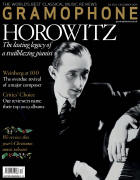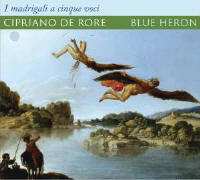Texte paru dans: / Appeared in: |
|
|
Outil de traduction (Très approximatif) |
|
|
Reviewer: Fabrice Fitch A musical landmark it undoubtedly is, but few would claim that Cipriano de Rore’s first book of madrigals constitutes easy listening. The distance between it and, say, Arcadelt’s Il bianco e dolce cigno (published three years earlier, in 1539) is startling. The dense, motet-like texture is almost unrelenting and the words are absorbed into the music, requiring the full attention of listener and performer. The noted specialist Jessie Ann Owens’s lucid introduction clearly sets out the nature of the challenge thrown down by Rore to his contemporaries and, one feels, later listeners as well. (Scott Metcalfe deals similarly with issues of performance practice, by no means as straightforward as one might think for music clearly intended for vocal soloists.) None of this is meant to put prospective listeners off, but to suggest how high the bar is set: the appeal of ‘difficult’ music is timeless, and it takes dedicated performers to break through to whatever lies beyond. Rore is worlds away from Blue Heron’s Peterhouse project but the same technical standards, seriousness of purpose and communicative musicality are very much in evidence. They tackle Rore’s lofty idealism head-on. Despite the thick texture, his imitative points are always clearly audible; and when he responds to some affect in the text, they subtly inflect the beat or the delivery. (A seeming ease in overcoming self-imposed difficulty is, after all, key to the aesthetic of the time.) Could the music breathe a little more, all the same? At times, perhaps, yes. To me, things go best when the soprano, rather than the countertenor, has the top line, because her timbre more easily contrasts with and cuts through the lower voices. But to bear the repeated listening the music demands, one must feel that details are in their proper place; in this sense, neither composer nor listener is sold short. To be fair, Rore himself offers the uninitiated a way in: the last three madrigals are easier to approach, like some of his subsequent later madrigals (the Petrarchan cycle on ‘Le vergine’ is a case in point). Though positioned as a kind of postscript, they’re a good place to begin. The text of each madrigal is read aloud prior to performance – sensibly, on separate tracks. This has been done before, but rarely if ever so convincingly. This is (seriously) impressive. |
|




